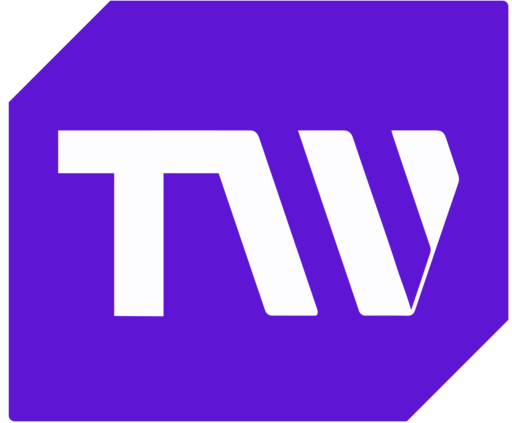The 5 Best Tools for Product Managers in 2025
The 5 Best Tools for Product Managers in 2025
Teamwork makes the dream work, and no one is more aware of this universal truth than product managers. However, according to the 2024 State of Product Management Report by ProductPlan, over 55% of product managers work for companies with over 100 employees. This means that successfully getting your product management team to work cohesively is no mean feat.
To tackle this issue, more businesses have adopted product management tools to help product managers maintain a tight-knit, efficient, and productive workforce. I’ve personally tested the 5 best tools for product managers in 2025 to determine which one is best for your company. Let’s take a look at what I found.
The Top 5 Best Tools for Product Management Ranked
1. Trello – Most user-friendly product management tool
2. Lark – Most affordable product management tool
3. ClickUp – Best management tool for small teams
4. Asana – Best for managing workflows
5. Monday.com – Best for customization
How Does Product Management Software Work?
Product management (PM) software is simply a suite of tools that helps teams plan, develop, launch, and manage products. These tools enable teams to maximize productivity and efficiency by streamlining workflows, enhancing collaboration, and providing insights to ensure the product meets customer’s needs and business goals.
After downloading and installing your preferred product management software on all your workplace computers, you will be able to create teams, delegate tasks, monitor progress, and identify areas of concern in one convenient virtual hub.
What are the Best Product Management Tools?
In a bid to answer this question, I tested the 5 best product management tools in 2025, and here are my findings:
1. Trello – Most user-friendly product management tool
Why We Picked It?
Trello comes in at the top of my list for its intuitive, user-friendly interface. I particularly loved the Trello board feature, which allowed me to plan and follow projects from inception to completion in one convenient place.
Features
While testing Trello, I was very impressed with how easy the user interface was to navigate and operate. The Trello Board allowed me to easily plan projects and break down each step into smaller tasks for my team to tackle conveniently. I was also able to customize my board to fit a wide variety of projects and assignments. This is a great feature for product managers with little experience using product management tools.
Trello’s product features also include the workflow automation tool, Butler, which lets me set rules and commands to control routine tasks within my workflow, allowing me to focus on more intensive work. In addition, the Timeline feature, which uses a simple drag-and-drop editor, made it easy to control each project’s life cycle. I could promptly set and change due dates and start times for specific tasks.
Although Trello doesn’t come with as many built-in advanced management tools as Asana, it offers a myriad of Power-Ups and integrations that allow users to add third-party functions and apps to their toolbox. Add-ons such as the calendar and voting tools make managing tasks much easier. Integrated management tools like Jira and Slack open doors to more workflow possibilities, making Trello one of the best product management software tools available.
Trello Pricing
Trello has a tiered tiered pricing plan, with each plan offering more features than the last. Although there is no money-back guarantee available, the free plan allows users to access Trello’s best features at no cost.
24/7 customer support is only available with the Enterprise plan. However, Trello’s community support page provides excellent solutions to any problems you might encounter. Customer support is also available from Monday to Friday during regular working hours for the Standard plan and all day for the Premium plan.
Who it’s Best For?
Trello is ideal for businesses that are new to product management tools and need easy-to-use software that can comfortably handle a variety of projects on both small and large scales.
2. Lark – Most affordable product management tool
Why We Picked It?
Lark is next on the list, offering great value for money with advanced workflow features for free. Having access to AI features at no cost was definitely a highlight of testing Lark.
Features
The feature that stood out to me while testing Lark was the AI-assisted Base feature. This is the central hub where I could create, plan, and monitor projects from start to finish, aided by OpenAI content generation. It also has Excel compatibility, which meant I could directly export Excel data to Lark Base with the click of a button. I also used Lark OKR to ensure everyone’s goals were aligned and my team was organized.
Unlike competitors such as Trello, Lark doesn’t offer unlimited cloud storage or group members. However, its built-in advanced features allow it to handle more complex tasks without the need for add-ons or integrations. I also enjoyed using the Lingo AI-assisted knowledge management system. The system collected frequently used specialized management terms and organized them in a library that users could easily access.
Lark Pricing
Lark offers a tiered plan with added features in each subsequent plan. In addition, you can get advanced workflow management features and AI-assisted tools on one of the best product management tools free of charge. Lark also offers 24/7 customer support through live chat, email, and a number of training materials.
Who it’s Best For?
Lark is best for startups and businesses looking for advanced product management features without breaking the bank. The availability of AI-assisted features at no cost is a definite bargain.
3. ClickUp – Best product management tool for small teams
Why We Picked It?
ClickUp makes my list for its exceptional document collaboration tools, which keep workflows tight and compact. ClickUp Docs was a standout feature for me, as I could use one comprehensive document to monitor and collaborate with team members on project tasks.
Features
In my testing, ClickUp’s collaboration tools were definitely the stars of the show. The ClickUp Docs feature combined seamlessly with the Tasks feature to create a detailed document where each specific task could be easily monitored. I could work simultaneously with team members on tasks to ensure everyone was playing their part and mistakes were being avoided in real-time.
The Whiteboard tool, which uses generative AI software to turn ideas into actionable steps, was also impressive. Although ClickUp isn’t as effective at managing workflows for larger teams as Asana, the Gantt charts feature still allows for maintaining a streamlined workflow even when the workload increases.
ClickUp Pricing
ClickUp offers a tiered pricing plan that’s slightly more expensive than competitors such as Trello. The free plan comes with essential features such as collaborative docs and Kanban boards. Additionally, if you opt for a paid plan and are unsatisfied with the service, there is a 30-day money-back guarantee window available to users. However, most issues can be easily resolved by ClickUp’s 24/7 customer support, which is available on all plans.
Who it’s Best For?
ClickUp is perfect for small teams or businesses that primarily collaborate on documents during their production process. Its advanced collaboration tools, such as ClickUp Docs, Whiteboards, and Chat, are directly linked to product management features, which makes it ideal for running a close-knit group.
4. Asana – Best for managing workflows
Why We Picked It?
Asana secures its place on my list thanks to its workflows and automation feature that allows you to create automated responses to workflow steps with no coding required. This allows teams to work faster and maximize efficiency through their workflow.
Features
While testing Asana, I was particularly impressed with the Asana AI automation that helped me optimize and streamline my workflow. The Forms feature allowed me to automate everything from task assignments to work schedules for each project. Additionally, I used the Rules feature to create custom automated routines that made task delivery and completion smooth and efficient and freed up more time for complex tasks.
Asana’s automation features are only available with paid plans, unlike competitors such as Trello, which offers them for free. However, Asana allows you to assign tasks to individual team members, instantly apply necessary changes to your workflow, and automatically collate tasks from multiple projects in one shared hub.
Asana Pricing
Asana utilizes a tiered pricing list with the starter and advanced plans geared toward individuals and small teams, as well as the Enterprise and Enterprise+ plans for larger businesses and enterprises. There is no money-back guarantee. But, despite having a maximum capacity of 15 users, Asana’s free plan comes with more than enough features to give you a good look at the platform functionality before committing to a paid plan.
Who it’s Best For?
Asana is ideal for product managers who need a system with versatile workflow management features. The automation tools make your workflow faster and more efficient, enhancing the potential and productivity of your business.
5. Monday.com – Best for customizations
Why We Picked It?
Monday.com rounds up the list with an intuitive and highly customizable dashboard that allows you to display only the most relevant insights and information for each project. Everything you need, from task progression to live revenue, is conveniently available on your dashboard.
Features
While testing Monday.com, I was highly impressed with the no-code Dashboard and Table customization features. Using a convenient drag-and-drop editor, I could select from over 50 different widgets and apps that provide various insights for my dashboard. The editor allowed me to display only the information necessary for each specific.
Furthermore, the Table spreadsheet feature allows each team member to record the task they need to complete and add progress reports and other relevant information over time. This makes it easy to track task progression and hold each member accountable for their assignment. Although competitors like Trello and Asana offer more workflow management features, Monday.com’s Gantt charts still do a capable job in that area, in addition to their customizations.
Monday.com Pricing
Monday.com’s competitive tiered pricing plan offers users 4 different pricing categories. The free plan allows just 2 users; however, it is a great way for product managers to test out some features and get a feel for the layout before upgrading to a priced plan. Also, there is no money-back guarantee, but Monday.com’s 24/7 customer support team is on hand through live chat, email, or call to help resolve any issues you might have.
Who it’s Best For?
Monday.com is best for product managers who want a modern, intuitive platform to track the progress of various projects. Its customization capabilities make creating a unique dashboard for each project a game-changer.
The Best Product Management Tools in 2025 Compared
Below is a detailed comparison of the 5 Best Tools for Product Managers in 2025. Let’s take a look at how they stack up against each other and decide which one is ideal for you:
Things to Consider Before Buying a Product Management Tool
Before breaking the bank on any product management tool, there are some factors to consider that will help you make the best choice for your business needs. Let’s take a look at what those factors are:
-
Budget – It is important to evaluate how to get the best possible value for money without sacrificing the essential management tools and features. For businesses on a tight budget, consider software such as Trello or Asana, which offer a free plan with advanced features.
-
Features – It’s vital that the tool you select has all the features you need to manage your projects effectively. Whether your business prioritizes collaboration or workflow efficiency, ensure your specific needs are covered.
-
Ease-of-use – The best product management tools are easy to install, maintain, and operate for both the managers and team members. If your business is new to using such software, prioritize tools with an easy-to-learn interface such as Trello.
-
Security – Nothing is more important than protecting your data and the data of your users. To ensure maximum data protection, make sure your tool complies with the General Data Protection Regulations (GDPR) or other relevant data protection certifications.
-
Customer Support – A responsive customer support team can make or break a user’s experience. It’s important to know a support team is always on hand to solve any problems. Look out for tools with 24/7 multi-channel support options like live chat, email, or mobile assistance.
What is the Best Tool for Product Managers in 2025?
My top recommendation for the best product management tool is Trello. The intuitive user interface makes setting up and operating the software easy. The Trello Board offers great customizability, allowing you to comfortably take on a variety of projects in one convenient place. Additionally, the Power-Up feature makes Trello fully scalable by providing third-party plugins and integrations that sync seamlessly with your workspace.
However, all businesses have varying needs, and one management tool isn’t ideal for all use cases. Businesses on a low budget that require advanced workflow features with AI assistance might prefer Lark. Small businesses that prioritize collaboration and close monitoring of project tasks might find ClickUp more suitable.


